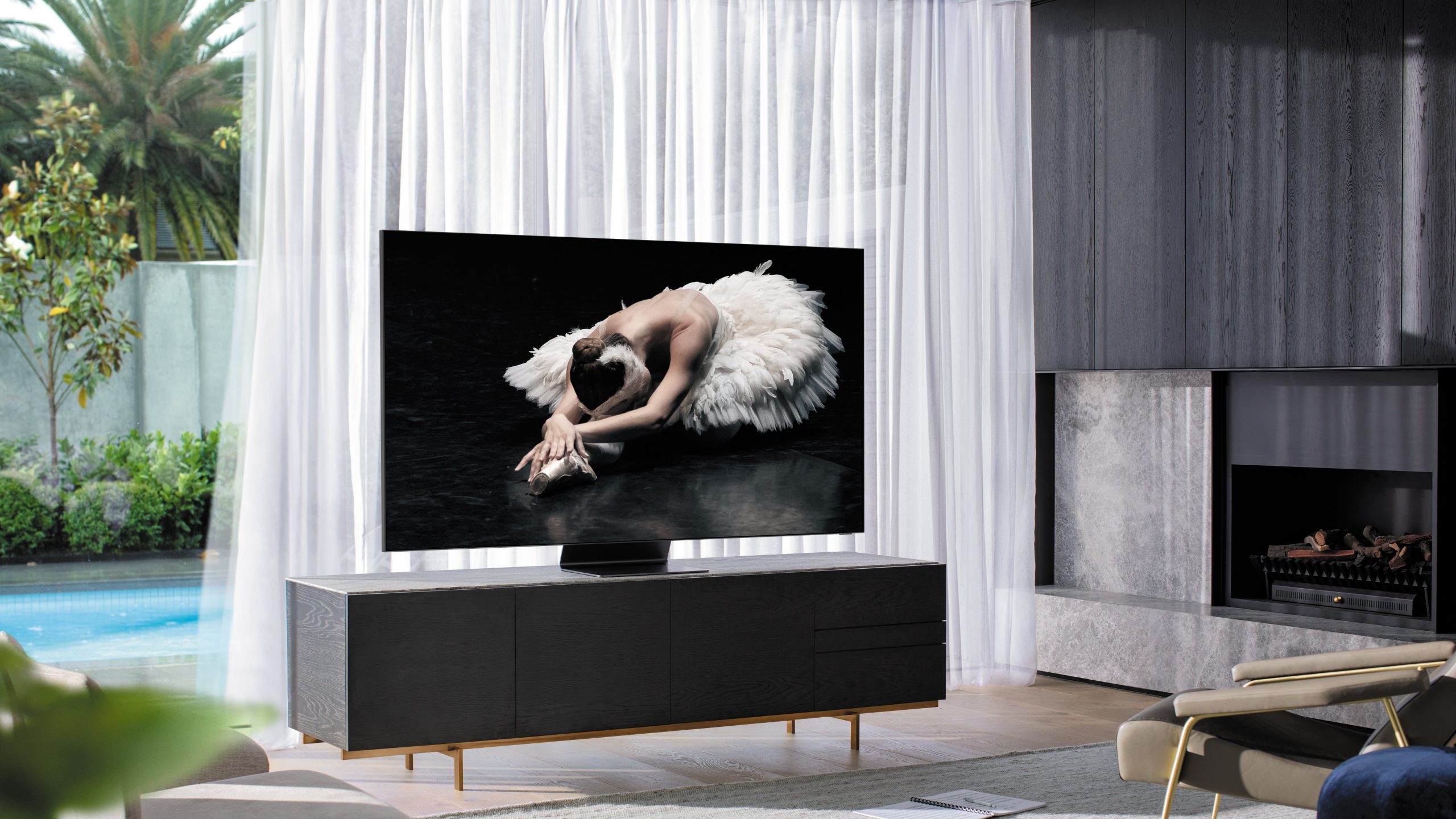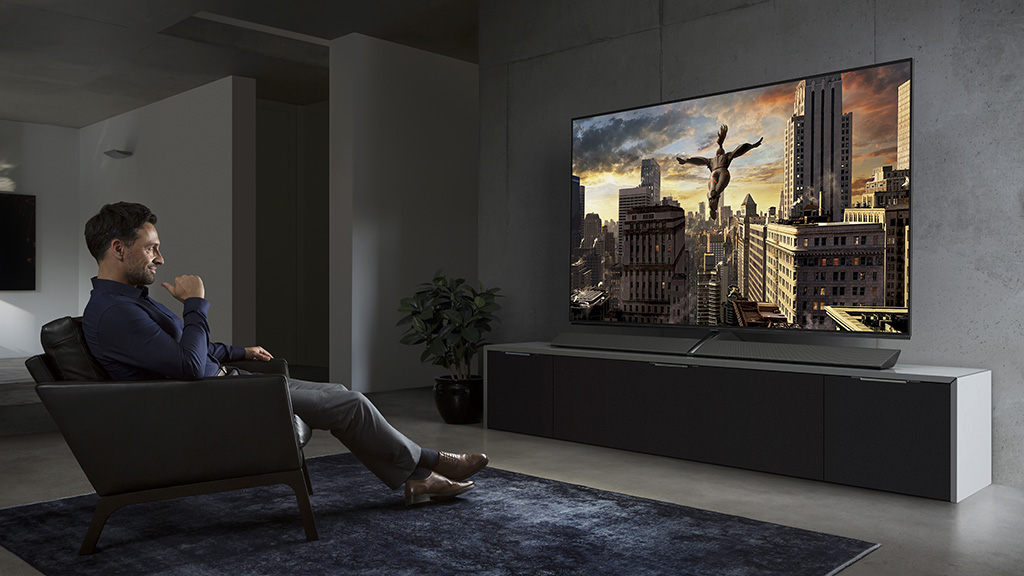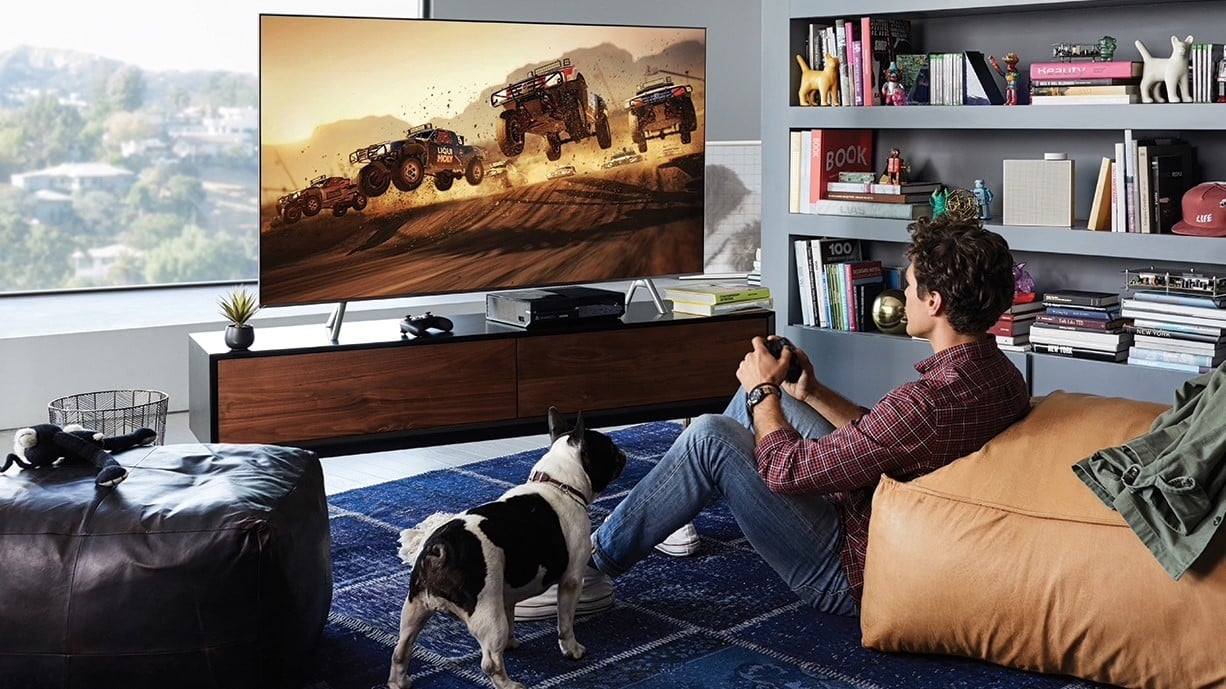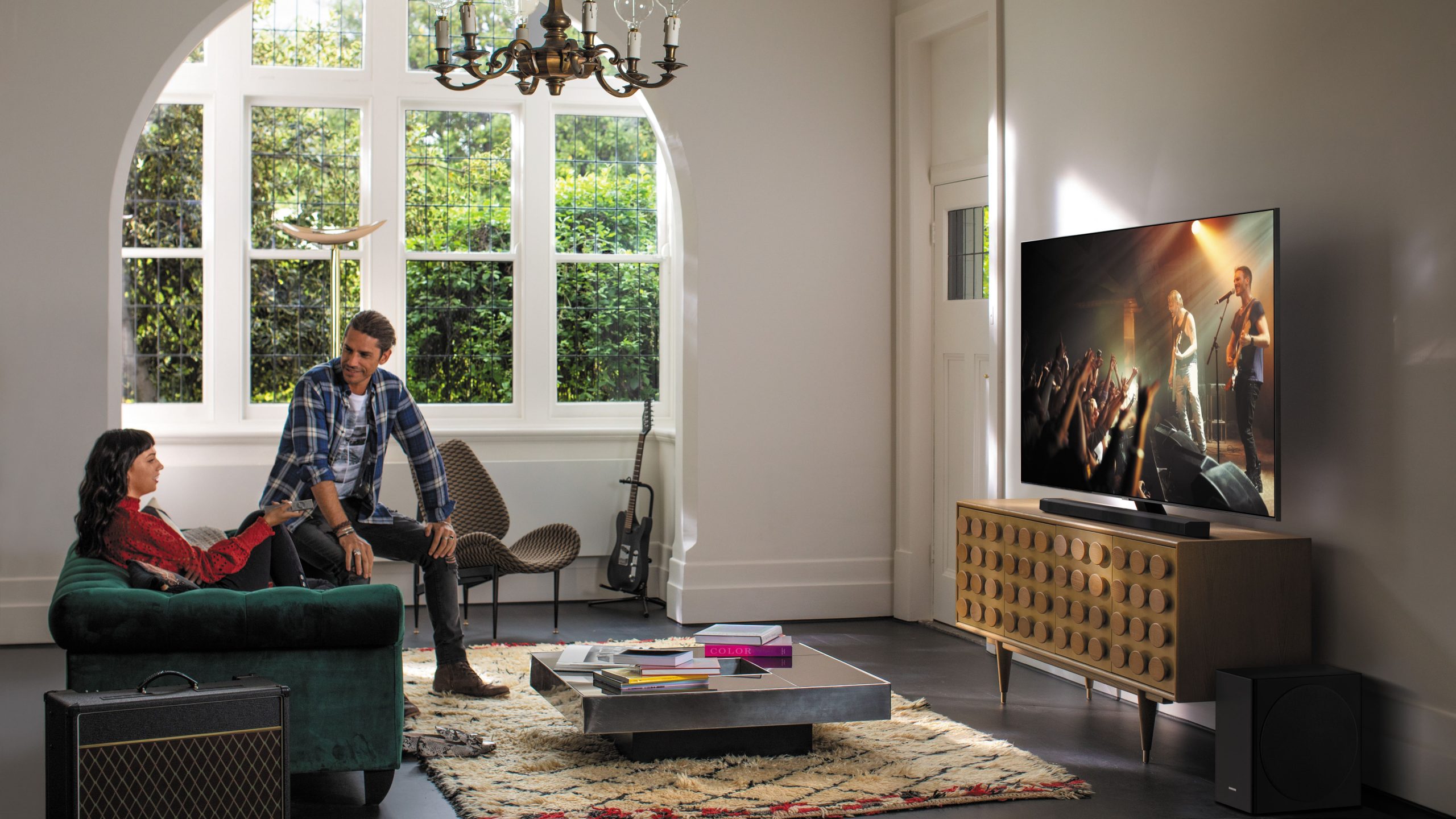OLED vs QLED? Organic or Quantum? If you don’t know which to choose, you’re not alone.
TV tech can be confusing. Especially with hard-to-understand technology that all sounds similar and so many acronyms to remember. It’s not surprising that many people aren’t sure what kind of TV they need to look for or which model to get when it comes to making that all-important buying decision.
To top it all off, new TV tech is launching every day. This muddies the waters even more.
Although it may seem like there’s new TV tech vocabulary to learn every week, the OLED vs QLED rivalry is shaping up to be the central question for premium TV buyers nowadays. So what do these names mean? And which one is right for you?
First up, let’s take a look at OLED. OLED displays are a kind of spiritual successor to the plasma TV. OLED tech has rapidly grown in popularity and prominence over the past few years. This is thanks to support from big names in tech, including Panasonic, LG, and Sony – and, for a little while, Hisense – with some truly excellent picks warranting their own best OLED TVs guide.
In comparison, QLED TV tech came out of nowhere in 2017. It was, technically, a rebrand of Samsung’s SUHD television range – but now QLED makes up a huge proportion of the best Samsung TVs. What’s more, QLED sets make up more new Samsung TVs than ever. And the cheapest models undercut the cheapest OLEDs by a substantial amount.
But is QLED the peak of current TV technology? That’s what lots of tech insiders might claim, but does it just get more of an advertising push from Samsung? With that in mind, is the OLED technology rival – supported by almost all other TV brands – actually the real deal?
If you hate acronyms (we understand) and don’t know where to begin choosing between the two, we’ve collected together only the most important details you need to know about both QLED and OLED TV technologies – what they are, how they differ, and which brands support them.
- Check out the very best Samsung TVs, QLED or otherwise

OLED vs QLED: is organic LED better?
We can summarise the battle between QLED and OLED in one sentence: QLED is a tweak of existing LCD technology, while OLED is a new technology altogether.
OLED – which stands for Organic Light Emitting Diode – uses a carbon-based film between two conductors that emits its own light when an electric current is passed through.
Since the pixels themselves are producing the light, when they need to be black they get switched off completely. That means no chunky LCD backlight, remarkably realistic blacks, so-called ‘infinite’ contrast, lightning-quick refresh rates and a muted brightness ideal for movies – if dim by LED standards. Watching an OLED TV for the first time will give you that rare feeling of having just witnessed something really very special.
OLED has been stuck at only a few TV sizes for the past few years – given the smaller scale of its manufacturing compared to LED – though LG has now expanded to a 88-inch LG 8K OLED and is developing 48-inch panels to give viewers a wider choice of OLED sizes.
New light sensors installed in 2020 Panasonic and LG TVs are also improving how well OLEDs manage in bright environments, even if they’re not used across the board yet.
- What is OLED?: check out our full guide to the panel technology
QLED vs OLED: the case for quantum dots
QLED isn’t a new TV technology as much as it is a rebrand. Until last year, Samsung called its flagship TVs SUHD, but that wasn’t working as well as it hoped, so it’s now called them QLED.
Yes, it sounds very, very similar to OLED, which suggests either a decision to intentionally confuse buyers with QLED – which stands for Quantum-dot Light Emitting Diode – but it’s very different to OLED.
The weirdest thing is that QLED TVs are not QLED TVs. A QLED TV should be just like an OLED TV in having a panel that’s self-emissive, so that it can switch individual pixels on and off. Samsung’s QLED TVs can’t do that, and in fact just put a quantum dot colour filter in front of an LCD backlight. It’s premature to call them QLED, and they should really be called QLCD-LEDs. Thankfully, not even the acronym-riddled TV industry could live with that.
The inorganic quantum dot light-emitting diodes in a QLED panel do not emit their own light, but instead are illuminated by a backlight, just like any LCD TV. That’s why they’re not as thin as OLED TVs.
So, really, it’s not a next-gen display technology at all, just a tweak to LCD TV tech. However, that doesn’t mean it’s not impressive – it really is very good.
- What is QLED TV? Everything you need to know
Which brands support OLED & QLED?
The battle between OLED and QLED is a story about branding, and it’s also about a South Korean rivalry. Every single OLED panel found inside every single OLED TV is made by LG Displays, and every single QLED panel is made by Samsung.
Team OLED:
Most TV brands are lining-up behind OLED, believing it to be the superior technology for picture quality. It’s hard to disagree, but despite LG, Sony, Panasonic, TP-Vision (under the Philips brand in the UK), Loewe, Bang & Olufsen, Skyworth, and ChangHong all now selling OLED TVs, they do tend to be very expensive. The maker LG Display just can’t produce enough OLED panels fast enough to bring them in at a lower cost, which is making OLED TVs seem like a top-tier premium TV technology only. Hisense has now ditched the technology, however – after a poorly-performing Hisense O8B OLED that didn’t quite make the best case for the technology.
Team QLED:
Samsung abandoned its efforts to make OLED TVs in 2014 due to low production yields, and only started talking about QLED again back in 2017. It’s now trying to popularize the technology by getting other companies involved.
Though the brands behind QLED are fewer, they’re quickly getting unionised. Samsung, Hisense and TCL banded together under the QLED Alliance back in 2017, in order to advance QLED development – and shift more QLED sets in the world’s biggest TV market, China.

OLED vs QLED: what’s best for gamers?
If you’re mainly interested in a television that’s good for gaming, we’d encourage you to focus on different criteria than OLED vs QLED.
With the PS5 and Xbox Series X coming this year too, you may want to futureproof with a set carrying HDMI 2.1 ports that can carry 8K video from consoles (at 60Hz), as well as 4K video at 120Hz. Low input lag isn’t always specified on TV product pages, but we recommend keeping an eye out for it nonetheless – or skipping to our best gaming TVs guide. This article on PS5-ready TVs runs through other specs and points of interest for buying a gaming TV too.
Certainly, OLED sets will be best for achieving natural contrast, and help make cinematic games – whether the intergalactic horizons of Halo Infinite or the lush forestation in Shadow of the Tomb Raider – look truly breathtaking. LG’s OLED TVs come with Nvidia G-Sync to help smooth out gameplay onscreen too.
However, QLEDs go a lot brighter, and may be better for practical visibility in the games you’re playing, and drawing out environments and in-game objects clearly. It may depend on what you’re playing – but getting a set with low input lag, VRR (variable refresh rate), or an HMDI 2.1 port, will be more important than the underly panel technology.

Should I buy a QLED TV or an OLED TV?
If you’re after a high-end 55-inch TV, buy an OLED TV, since both technologies are roughly the same price at that size. However, if you have something else on your mind – a smaller screen size and/or smaller budget to play with – it’s more complicated that that.
Since LG Displays makes all OLEDs and Samsung all QLEDs, you might think that it’s possible to draw grand conclusions about which tech is better with – for example – games, and which is better with movies. That’s not the case. As with all consumer electronics products, it depends on (a) how much you spend, and (b) which brand you opt for.
Samsung’s flagship QLED is the Samsung Q950TS 8K QLED TV, while the LG E9 OLED best extols OLED’s virtues. Check out our reviews of these two sets if you want to see the best both technologies have to offer – or wait to see what incoming sets for 2020 could replace them.
For cheaper televisions – under $1,000 / £1,000 / AU$1,500 – you’ll have to stick with an LED or QLED television for now, as OLEDs simply aren’t priced that cheaply yet. But you can get the Samsung Q60R QLED, for example, for only a few hundred dollars / pounds at its smallest 43-inch size.
There are plenty new Samsung TVs arriving for 2020, alongside a new slate of OLEDs from LG, Panasonic, Sony, and Philips – so there’s plenty of opportunity for these stakes to change in the coming year.
- Samsung vs LG TV: which TV brand is for you?

The future for OLED & ‘true’ QLED
If you are after the very best in picture quality, the advice is simple; buy an OLED TV. However, it’s a close run thing, and besides, that situation may not last for long because so-called QLED TVs may soon ditch the LCD backlight to actually become QLED technology proper… and therefore catch-up with OLED. Cue ‘true’ QLED.
“True QLED sets are self-emissive, as with OLED sets, and are not yet in the market, but are anticipated to be so in the coming years,” says David Tett, Market Analyst at Futuresource Consulting. “When it is released it is expected to provide the strongest challenge to OLED yet, as it brings many of the same benefits as OLED, with few potential drawbacks.”
So-called ‘true’ QLED TVs that are self-emitting were rumored to be incoming from Samsung in 2020, if not later. As well as being self-emissive – so as capable as OLED TVs at switching pixels on and off individually – ‘true’ QLED TVs should retain their brightness advantage. Samsung could even compete with a OLED-QLED hybrid, if recent reports are anything to go by.
If the future is bright for QLED, those behind OLED panels are hoping that one of the technology’s native characteristics, flexibility, wins the day. “OLED sets can offer new audio solutions that see the panel vibrate to create sound and could also offer new form factors, both due to their flexible nature of the panel,” says Tett. This is nowhere clearer than with LG’s incoming rollable OLED, the LG Signature Series OLED R, which is able to curl up into the television’s base.
For now it’s OLED that takes the crown for the best – and most expensive – TV tech around, but unless LG Display can massively increase its production rate and create more screen sizes, the immediate future of the mainstream TV could still belong to QLED.
